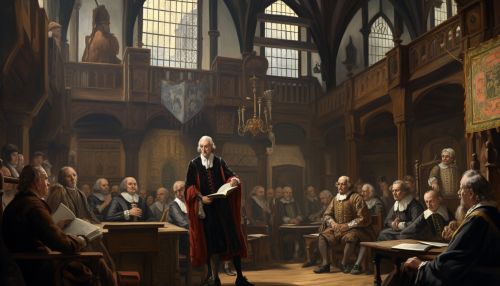Cavalier Parliament
Background
The Cavalier Parliament was the longest English Parliament, sitting from May 8, 1661, until January 24, 1679. It marked the start of the Restoration era, following the interregnum period of the English Civil War and the Commonwealth of England.
Composition
The Cavalier Parliament was predominantly made up of royalists, hence the name 'Cavalier', a term used to describe supporters of King Charles II. It was a time of significant political change, with the Parliament's composition reflecting the shifting power dynamics in the country.
Key Legislation
During its tenure, the Cavalier Parliament passed several key pieces of legislation. These included the Corporation Act 1661, the Act of Uniformity 1662, the Conventicle Act 1664, and the Five Mile Act 1665. Each of these acts was designed to strengthen the position of the Church of England and suppress dissent.


Impact
The Cavalier Parliament's legislative agenda had a profound impact on England. The laws passed during this period shaped the religious, political, and social landscape of the country for years to come.
Dissolution
The Cavalier Parliament was dissolved in 1679, marking the end of an era. The dissolution was a result of growing tensions and political instability, culminating in the Exclusion Crisis.
Legacy
The legacy of the Cavalier Parliament is complex. While it was a time of significant political change and legislative activity, it was also a period of intense religious and political persecution.
